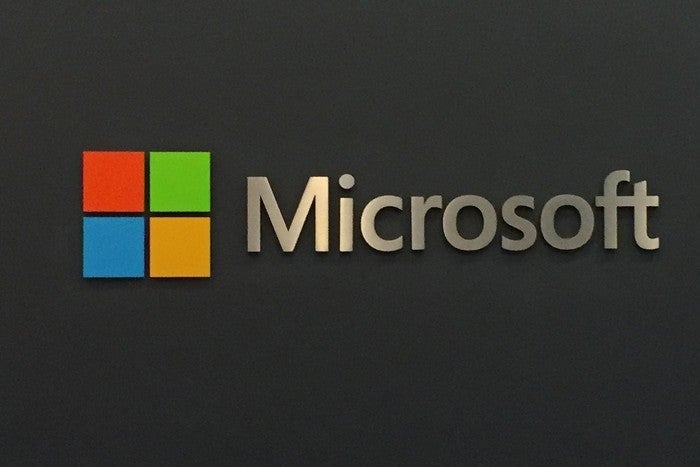Why Microsoft gave Windows 10 (version 1803) a different name

Microsoft will start distributing the next Windows 10 feature upgrade, "Windows 10 April 2018 Update," today - a few weeks later then it had been expected to arrive.
The release date barely squeaked under the wire Microsoft set for itself with its labeling of the upgrade, although the company has never expressed concern when actual release dates have conflicted with each update's alternate - and numeric - title, the one formatted as yymm. That conflict continued with the April 2018 upgrade. Its 1803 moniker envisioned a March, not a last-day-of-April, debut.
But the new name puts a spotlight on more than just that long-standing contradiction. Here are the most likely reasons Microsoft changed Windows 10's nicknaming.
Microsoft would have exhausted seasonal names
After last year's "Fall Creators Update," for the October feature upgrade, Microsoft would have run out of seasons this month unless it was willing to upend, if not its twice-annual cadence, then the times during the year when it would issue a refresh. (There was a time when virtually everyone, including Computerworld, assumed the latest would be branded as "Spring Creators Update," a single-word upgrade on April 2017's "Creators Update.")
The protesting howls would have matched stadium concert levels.
As some noted, the naming is also northern hemisphere-centric, because south of the equator, "spring" comes in September and "fall" in March.
So, absent a decision to add Roman numerals to the nameplates - "Spring Creators Update II" or "Fall Creators Update IV" - and risk mimicking Hollywood's creative bankruptcy, Microsoft faced a forced name change.
Microsoft fell back on the in-place date naming
From the first year of Windows 10, Microsoft has used yymm as another, and shorter, name for each feature upgrade, including 1507 (the original), 1511 (the first upgrade of November 2015), 1607, 1703 and 1709 (released in October 2017).
Although Microsoft has never explained why it chose that nomenclature, it was likely in lieu of a different numerical name tag, such as OS X's and 10.x.
By punting to a date-as-name, Microsoft at least makes it easier to remember when an upgrade debuted. And that's important, since each upgrade is supported for a limited time: 18 months for Windows 10 Home and Windows 10 Pro, 24 months for Windows 10 Enterprise and Windows 10 Education.
However, Microsoft may have just confused matters with the month,year. Unless the former 1803 designation is changed (to 1804), the two do not match. Which is the one used for starting the support count?
Catchy names are passé
While some developers continue to name each regularly-issued upgrade, most notably Apple with its California place names for OS X/macOS (after largely exhausting the supply of big felines), the practice is rare, especially for mature software. For example, it was news when Mozilla named one of its Firefox upgrades as "Quantum," than refer to it solely by its version number (XX for those keeping score at home).
By going with month,year as a name, Microsoft dispensed with the awkward inability to iterate, but still retained the flexibility that seasons provided. With the latter, the Redmond, Wash. developer could miss, say, its September target for another Fall Creators Update by a month, delivering code in October, without anyone raising eyebrows, even two months into November if pressed. Now it can, one supposes, blow by an expected release by three or more months, as long as it tags it as, for example, June 2019, without criticism of the naming (but likely lots of criticism for sloth).
Consumers aren't important
Microsoft's Windows 10 names, and how the company has marketed them, have been consumer-centric. "Our mission with these updates is to create a platform that inspires your creativity," said then-head-of-Windows Terry Myerson in a post to a company blog before the launch of last year's Fall Creators Update. In the same post, Myerson trumpeted topics like photography, gaming and "mixed" reality; none of those were areas of great interest to businesses.
Ditching the idea of a snappy name - nothing rolls off the tongue like "April 2018," right? - better aligns Windows with its most important market: enterprise. Companies and corporations don't need to be sold on Windows - what is the alternative at this point? - or even Windows 10 upgrades. Once an enterprise has adopted Windows 10, it is locked into the upgrade schedule, more or less. An IT staff may skip an upgrade, but realistically no more than one, before getting back on the train.
The lack of a catchy title for an upgrade is simply one more piece of evidence that Microsoft considers consumers to be second-class customers. Previously, the strongest signs of that have been the forced upgrades to Windows 10 Home, and how Microsoft turned those users into testers of issued upgrades. (Only after consumers have found bugs, and Microsoft has fixed them, has each upgrade been deemed suitable for enterprise release.)
https://www.computerworld.com/article/3269292/microsoft-windows/why-microsoft-gave-windows-10-version-1803-a-different-name.html